Photos of the crystal processor Intel 8008, which gave life to the first PC
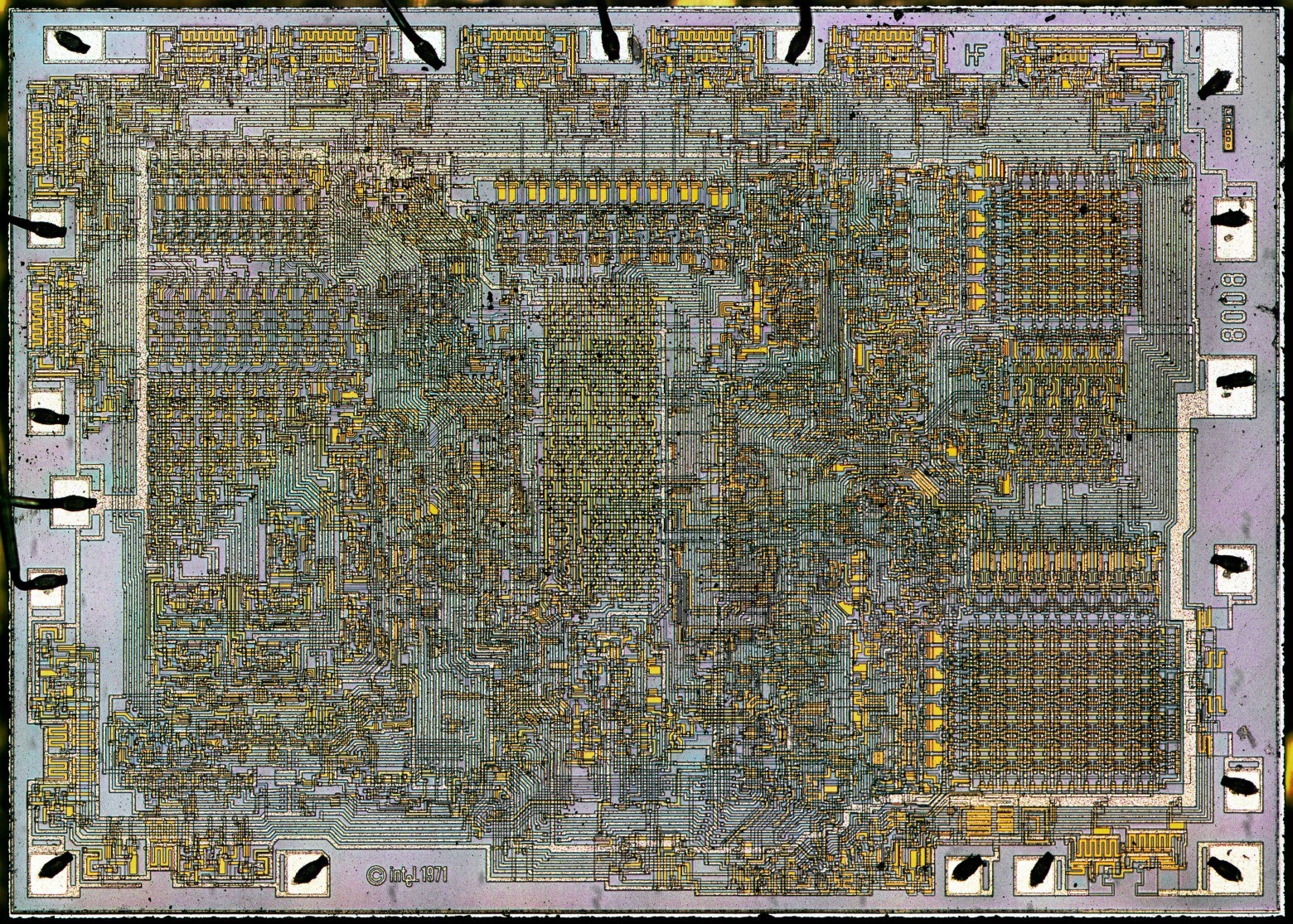
Intel 8008 microprocessor chip under a microscope (see photo at a higher resolution of 3565 × 2549 )
Microprocessor and charger enthusiast Ken Shirriff is well known in the electric booster community. He used to publish detailed well-illustrated reports with analysis of a tiny charger for the iPhone , a dozen other chargers , among which the great Apple product is not even the best. In 2013, he conducted ALU reverse engineering in the Z80 processor using his photos (this is a processor from Osborne 1, TRS-80 and Sinclair ZX Spectrum).
Now Sherriff drew attention to the historic Intel 8008 processor - the first 8-bit CPU released by Intel on April 1, 1972, that is, almost 45 years ago, at a price of $ 120. Intel 8008 chip was positioned for advanced calculators, but eventually found its place in the first personal computers.
As Wikipedia says , at first, Intel feared that the processor would not interest customers, but these concerns were unfounded. The processor was waiting for a big success. After it, the company released the Intel 8080, and then the extremely successful Intel x86 family.
')
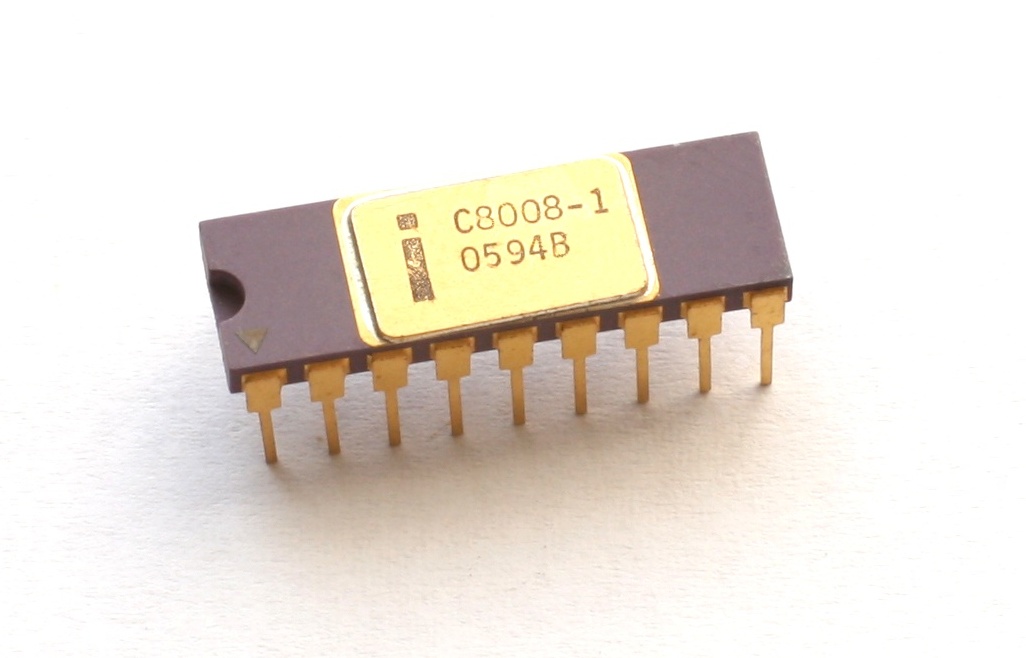
Intel 8008 chip
On the basis of Intel 8008, customers began to collect not only calculators, but also minicomputers. One of the first commercial personal computers, including the American SCELBI, French Micral N and Canadian MCM / 70, worked on this processor. Perhaps the first true microcomputer with a disk operating system and the IBM Basic Assembly Language (BAL) built into the PROM based on the Intel 8008 was Sac State 8008 , designed in the years 1972-1973. Assembled, probably in a single copy, this mini-computer was equipped with a color display, hard disk, keyboard, modem, tape reader and printer, and the developers provided invaluable assistance to Intel in compiling a set of instructions for the future Intel 8080. Already in 1973, Sac State 8008 superior in functionality to Altair 8800 of 1975, which gave inspiration and idea for business to Steve Jobs, Steve Wozniak and many other enthusiasts around the world.
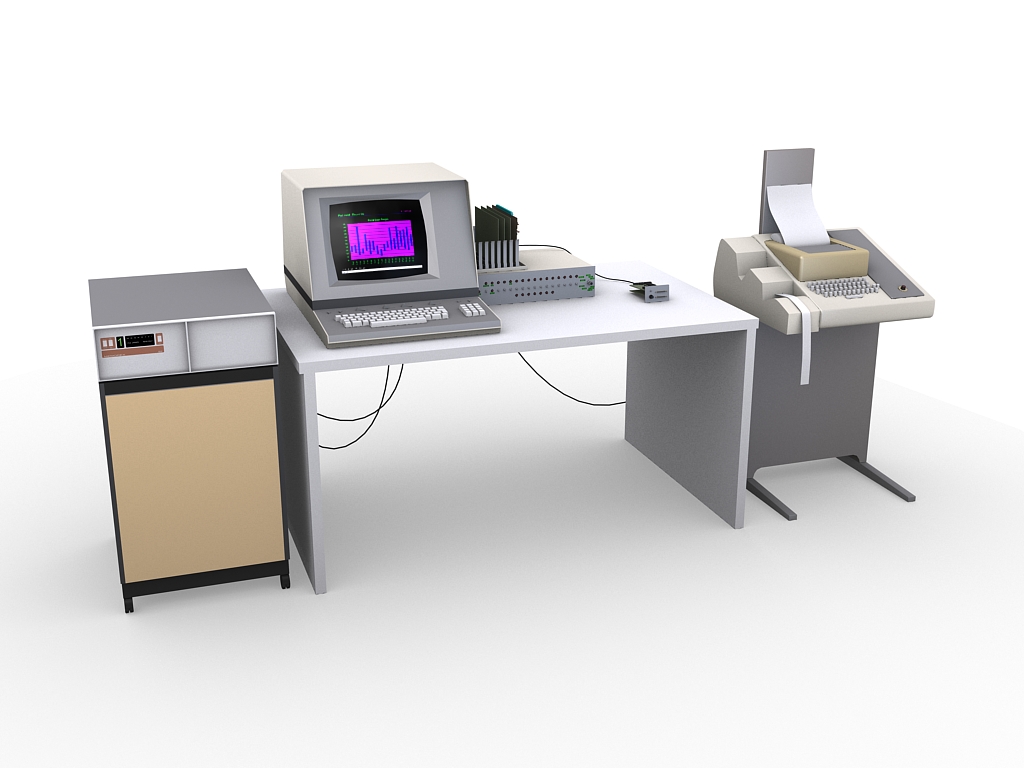
Art 3D-rendering Sac State 8008
Judging by the historical evidence, it is the Sac State 8008 that can be called the first real personal computer in the world.
Ken Shirriff published a detailed analysis with a large number of photos, like the legendary 8008 processor looked like. An enthusiast independently opened the case and took photographs of the crystal under a microscope, on which you can even see contacts and transistors on the crystal. Below one of the sections of the chip is increased.

Along the perimeter of the microcircuit, 18 contact pads are visible, which are connected by thin wires to the external contact pins (legs of the microcircuit). Photographing the entire crystal took 48 frames. Ken Shirriff used a brightly lit metallographic microscope .
Then the specialist glued 48 frames together using the Hugin software. To get a beautiful high-resolution photo, he also twisted the contrast. For comparison, here is what the original photo looks like, which roughly corresponds to what you actually see with an optical microscope.
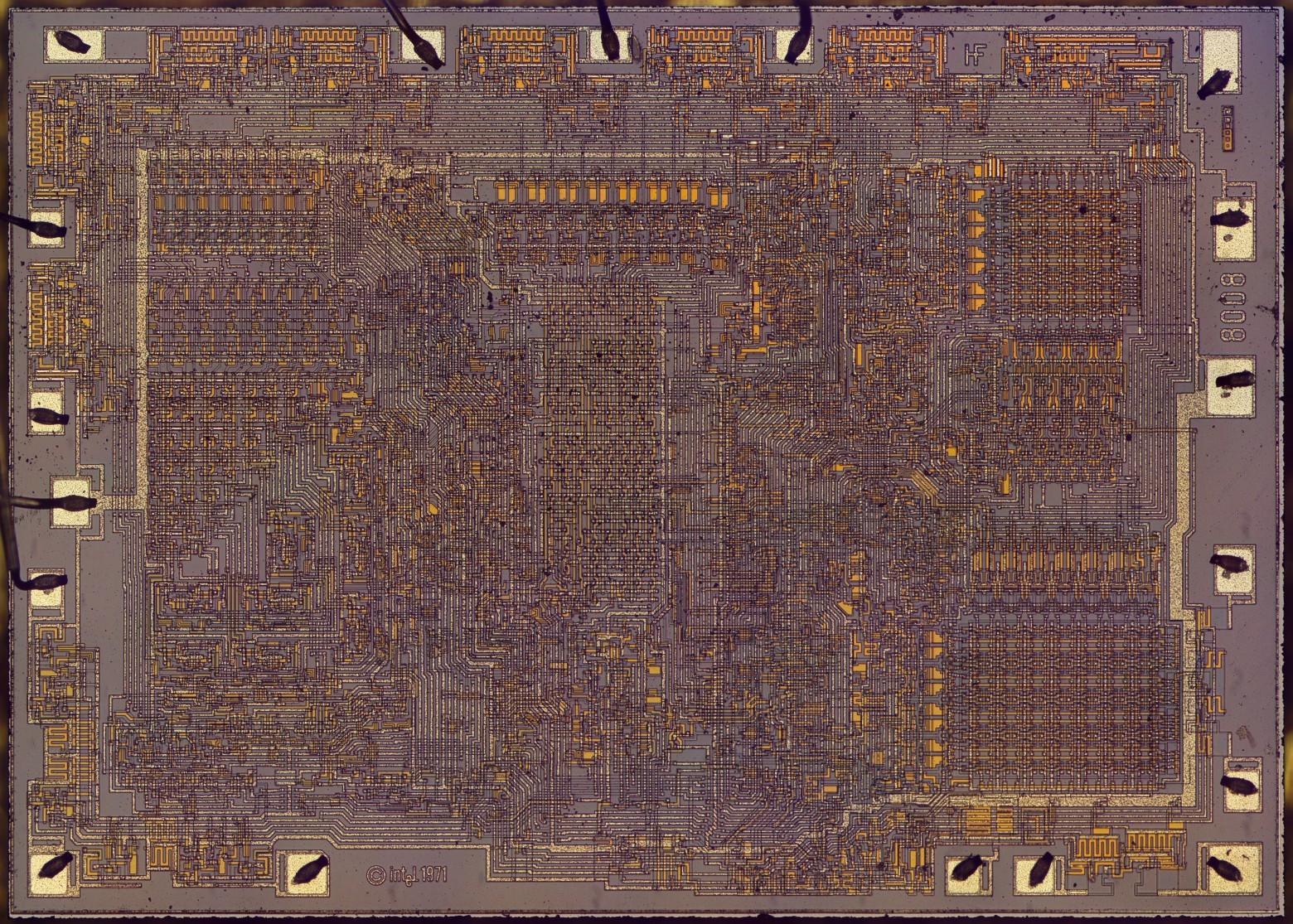
Intel 8008 microprocessor chip under a microscope (see larger resolution 4730 × 3382 photo )
From the processor documentation, you can find out exactly where specific functional areas are located on the chip. They are all labeled in the following image. On the left is the arithmetic logic unit (ALU), in which the calculations took place.
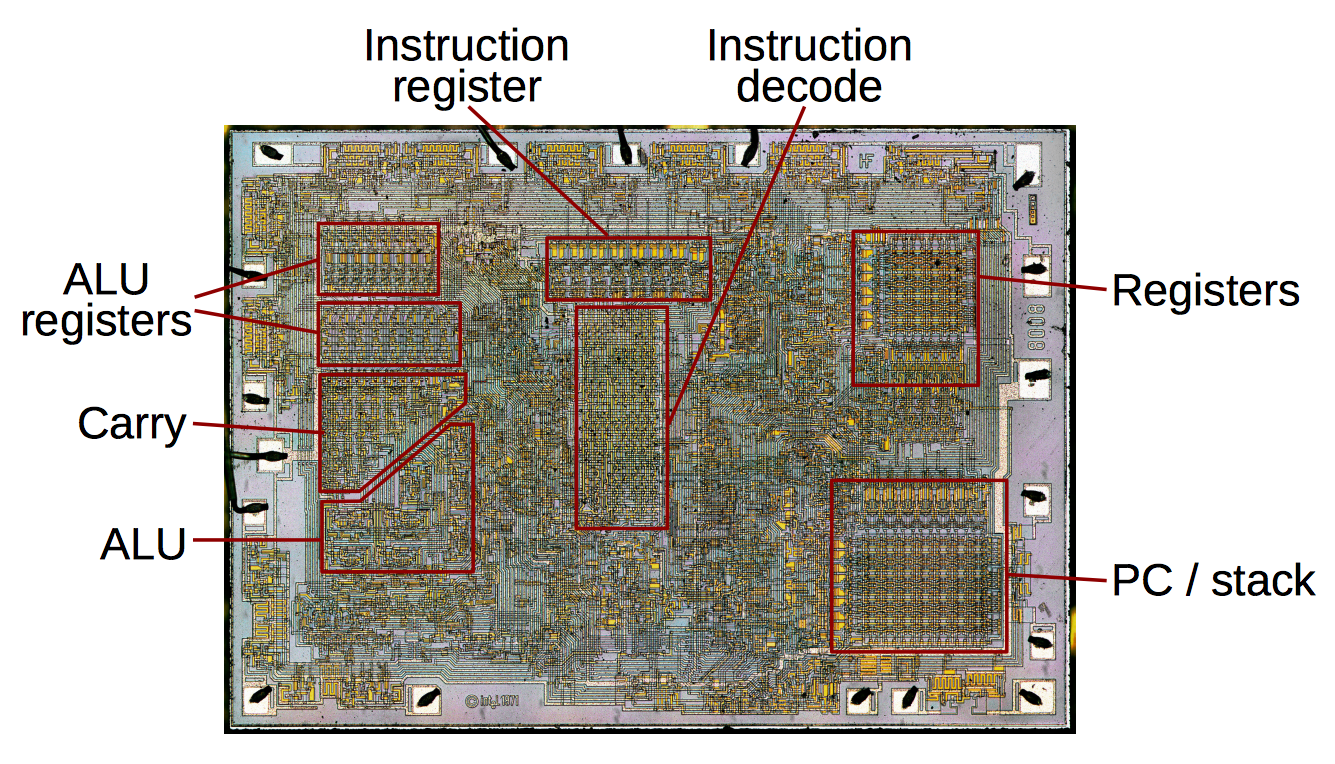
The ALU used two temporary registers to store incoming data. These registers occupied a large area on the chip. Not because they are complex, but because large transistors are needed to transmit a signal through the ALU circuit.
The ALU triangular design also looks unusual. In most processors, the circuits are arranged in rectangular blocks for each bit. However, in 8008, eight blocks (one for each bit) are distributed in a triangular area in a random fashion to fit into the area left for them by the carry generator (triangle generator).
The physical structure of the chip coincides well with the block diagram from the Intel 8008 user manual . The blocks on the chip are almost in the same places as in the diagram.

The engineer points out that the specialists have no explanation why Intel used a clearly insufficient number of 18 legs for such a chip (14 address bits and 8 data bits), because due to this non-standard bus architecture, we had to use a lot of additional electronics with this processor. He says that 16 contacts were literally "religion in Intel", but the designers managed to reduce the number of legs to only 18 by sly manipulations with the bus architecture.
Source: https://habr.com/ru/post/400329/
All Articles